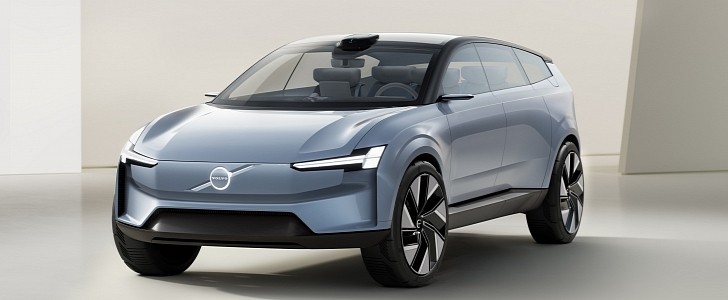Interestingly, the past has a way of coming back to pave a clear path towards a pure electric age. At least that’s the case with Volvo Cars’ latest manifesto for the company’s pure electric future. Notice the way the Swedish-Chinese company spelled out its name as the Volvo Concept Recharge? Well, they rearranged the words because in 2008, a C30 was turned into the Volvo Recharge Concept (explanatory video embedded below). That could be a bit confusing.
Well, these are the ways of the automotive world. Perhaps this could signal another case of creative failure, like the one where everyone’s been talking about Disney’s rehash of animated wonders into (sometimes) insipid live-action remakes. But it could also be a rather involuntary admission of how Volvo has been forging on the zero-emissions path for a long time already.
Whatever the case, the company says its new Concept Recharge comes as a statement that “electrification is more than simply a shift in powertrains” and seems just about ready to deliver a new paradigm in car design with the clear intention to showcase the “manifesto for the next generation of all-electric Volvos.” As always, beauty is in the eye of the beholder, and some might even deride the company’s boxy styling and the 90-degree door opening that reminds of side-by-side refrigerators.
On the other hand, boxy designs have been a staple of Volvo styling for decades, and that door feature enables easy access to both the front and back rows. Better yet, by entirely taking the internal combustion engine out of the equation, Volvo says its designers were allowed to both maximize interior space and improve aerodynamic efficiency.
The company also officially reveals that its next generation of electric cars won’t have a shared architecture with the ICE counterparts, so the company’s first SUV on a purpose-built EV platform will come with a flat floor, as previewed by the Concept Recharge. This is where the full battery pack resides, and the prototype also introduces the world to Volvo’s new design language that continues on a path of “less but better.”
We now have shorter overhangs with an increased wheelbase, no traditional grille, a reinterpretation of Thor’s Hammer lights, very slim vertical taillights (reimagined with a set of wings that extend at high cruising speeds), and repositioned seats with a very large storage area in between the front ones. Technology is also a key player, as Volvo premieres a big 15-inch touchscreen for the next-generation connected infotainment system and a Luminar LiDAR sensor that collects data from the rooftop.
Whatever the case, the company says its new Concept Recharge comes as a statement that “electrification is more than simply a shift in powertrains” and seems just about ready to deliver a new paradigm in car design with the clear intention to showcase the “manifesto for the next generation of all-electric Volvos.” As always, beauty is in the eye of the beholder, and some might even deride the company’s boxy styling and the 90-degree door opening that reminds of side-by-side refrigerators.
On the other hand, boxy designs have been a staple of Volvo styling for decades, and that door feature enables easy access to both the front and back rows. Better yet, by entirely taking the internal combustion engine out of the equation, Volvo says its designers were allowed to both maximize interior space and improve aerodynamic efficiency.
The company also officially reveals that its next generation of electric cars won’t have a shared architecture with the ICE counterparts, so the company’s first SUV on a purpose-built EV platform will come with a flat floor, as previewed by the Concept Recharge. This is where the full battery pack resides, and the prototype also introduces the world to Volvo’s new design language that continues on a path of “less but better.”
We now have shorter overhangs with an increased wheelbase, no traditional grille, a reinterpretation of Thor’s Hammer lights, very slim vertical taillights (reimagined with a set of wings that extend at high cruising speeds), and repositioned seats with a very large storage area in between the front ones. Technology is also a key player, as Volvo premieres a big 15-inch touchscreen for the next-generation connected infotainment system and a Luminar LiDAR sensor that collects data from the rooftop.













